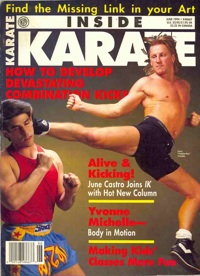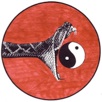
MONSTERMARTIALARTS.COM
The Source of the True Art!
The following article illustrates how the author created
his own brand of Classical Karate.
CALLING ALL BASICS!
Basics are the answer.
Anybody who has gone
anywhere in the martial arts
knows that the foundation
for all future movement
must lay in proper basics.
When asked what the most important forms in Karate were the Master instantly replied, ‘Taikyoku.’
‘What! Taikyoku! But those are the first forms you learn in Karate! Those are the ones you teach beginners when they walk in the doors! How can they be the most important forms?!’
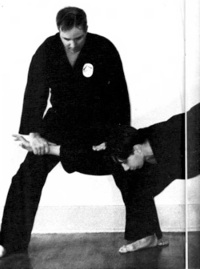
‘Basics,’ is the answer. Anybody who has gone anywhere in the Martial Arts knows that the foundation for all future movement must lay in proper basics.
But, and here I am about to say something that might not be popular, there is something wrong with the Basics in Karate. To be more specific, there are quite a few things wrong with the Basic Forms in Karate.
Before the rope appears in the crowd let me make a couple of points.
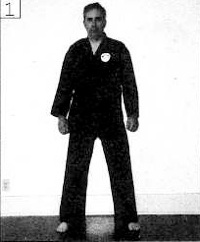
And if somebody was going to attack you from the side would you turn 270 degrees and then step into them?
If you did a Low Block, presumably to protect oneself from a kick, would you then take a full step forward to punch?
If you consider these questions in light of the Basic Forms, and even quite a few that are not so basic, you may understand what I am getting at when I say the Basic Forms, as practiced in most Karate systems, are unreal and even ridiculous.
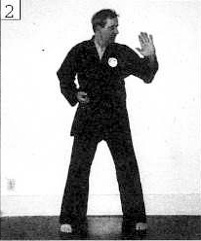
And with all respect to the people trying to explain things which are not all that explainable, let me say, ‘Horse Puckey.’
Of course if somebody was to except all that I am saying, without reservation, that would leave them out on a limb. For if we don’t have the Basic Forms to learn a proper foundation would do we have?
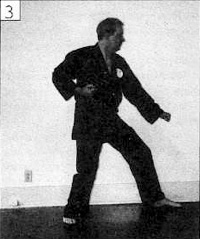
House is a form dreamed up by myself which, if taught correctly, can replace all existing Basic Forms. It is short and simple, only seven steps, and yet the practitioneer who studies House will progress much faster and further, in a much shorter period of time, than practitioneers who stay with the current Basic Forms. Let me explain it step by step.
1
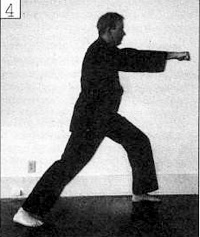
2
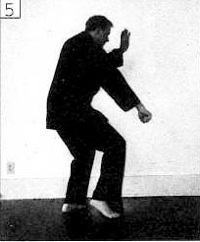
3
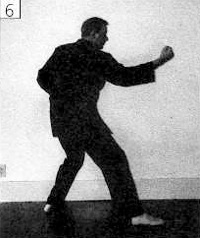
4
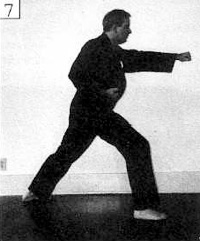
5
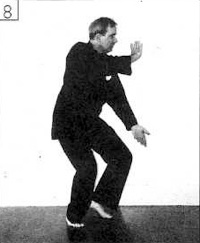
6
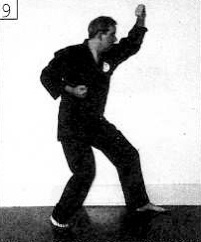
7
Step back with the left leg into an Hourglass Stance (facing 90 degrees from the direction of the form) as you execute a simultaneous left High Cross Palm Block and a right Low Cross Palm Block. The student becomes immoveable by learning how to ‘Stand like a Mountain.’ Within this technique there are different level Palm Blocks and elbow strikes, as well as the potential crossed arm blocks.
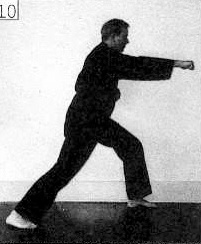
The Basics of Karate are:
Low Crossed Wrist Block
Low Block
Low Cross Palm Block
Middle Block (Inward or Outward)
High Cross Palm Block
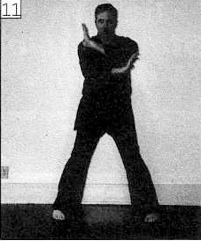
High Crossed Wrist Block
These Basics, arranged properly, form a circle around the front of the practitioner’s body wherein each block covers approximately 6 inches of space (a hand length), which defines exactly where and how each block should be done.
While this doesn’t obviate the necessity to learn how to make Basics work in a variety of different manners, this datum does simplify and give an order and logic to the Basics which is unassailable.
Further, if one considers the basics in light of this theory, one is able to combine the basics in a much more comprehensive and effective fashion.
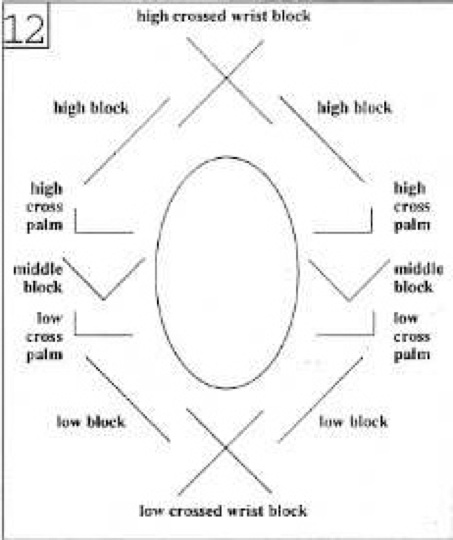
I have to tell you that I happened on this theory while trying to figure out Pa Kua. After a number of years of trying to figure out basics and twining them together I turned around and applied the same principle to Karate. The results were more than I imagined. Because by treating the basics in this manner one could actually create virtually every single technique in Karate.
Consider the following technique and variation.
1
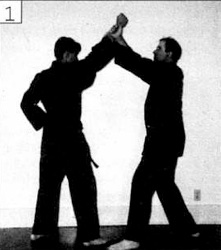
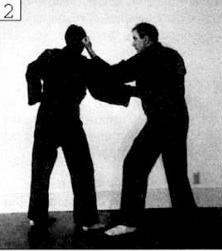
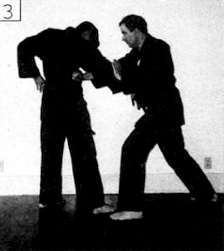
The Attacker punches to the face with the right hand.The Defender catches the punch with a High Crossed Wrist Block. The Defender pulls the Attacker’s wrist with his right hand while executing a left downward Backfist. The downward Backfist is a different way of entering the arm position described by a Middle Block. This sets up a Reverse Punch.
2
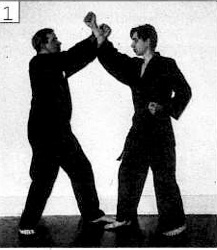
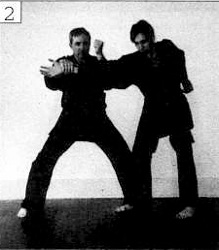
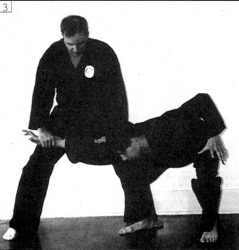
Or, the Defender could pull the Attacker’s arm into an Armbar, which, again, is a different way of entering a Middle Block. The Defender lowers his hands through the Low Block positions to take the Armbar into a Takedown.
By inspecting this technique and variation one can see that the Basics, as I have outlined them, can be utilized in many different ways, and can, actually, explain pretty much the entire range of Classical Karate technique. If you don’t believe me then I invite you to proceed through your repertoire of technique and form and see if you can find these Basic arm positions within virtually everything you know. Let me say, finally, that to define ‘Classical Technique’ one should make sure that the body is aligned from the ground, through the Tan Tien, and out the arms. If you define your Classical Technique in this manner, you may find that what I have been saying in this article is true, and that you can safely put aside your Taikyokus and Kebons and so on in favor of ‘House.’
Are you interested in finding out more about this type of Karate?
Go to The Matrix Karate Page.
This article appeared in the June 1994 Inside Karate.

